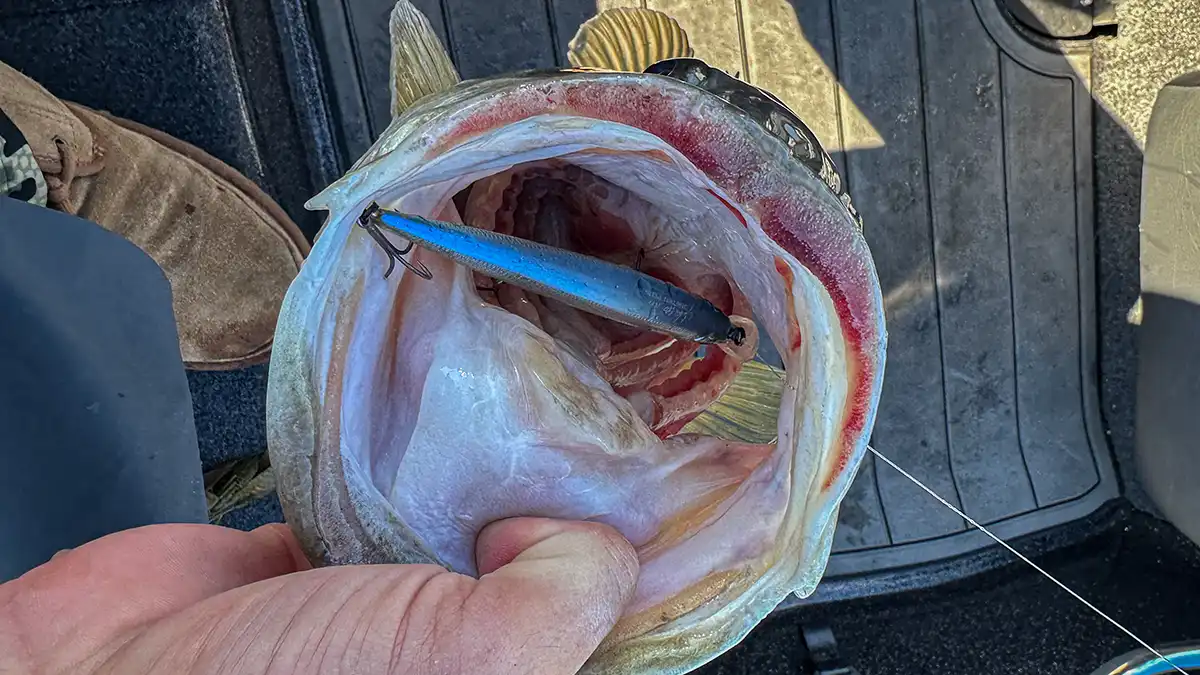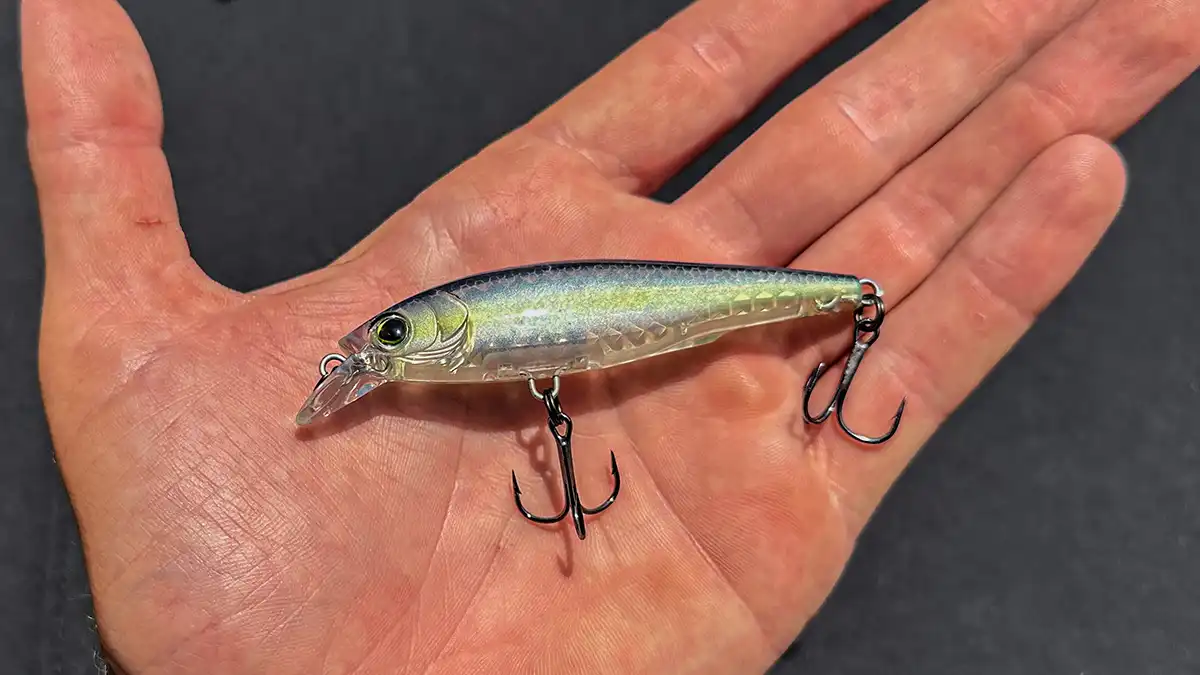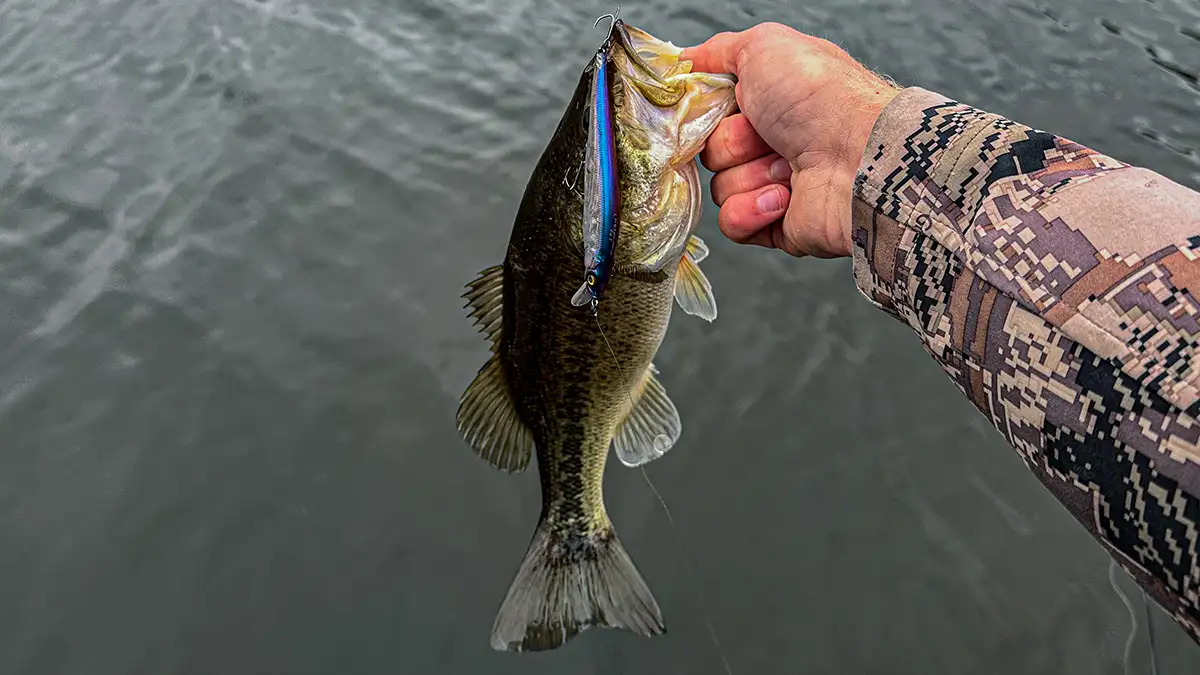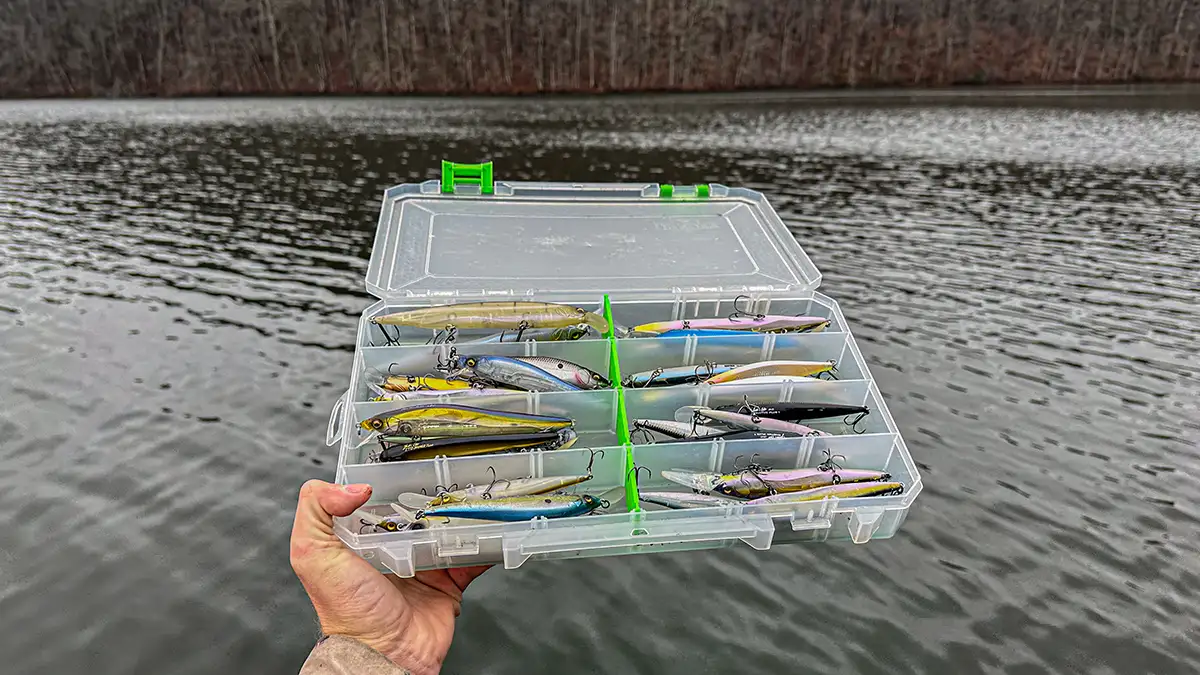One of the simplest, yet most effective tools an angler can have in their arsenal is a jerkbait. This lure can be used from coast to coast and is responsible for catching tons of giant bass. This lure is extremely easy to use and doesn’t require any specialized equipment. You can fish this bait in a variety of scenarios, and it truly works on every lake in the country. Throwing a jerkbait is simple, however there are several nuances that will help you become a more successful jerkbait angler. This feature highlights some of those nuances while explaining how to fish a jerkbait.

WHERE TO THROW A JERKBAIT
Like previously stated, you can throw a jerkbait in a variety of scenarios, however they all have a few things in common. Clear water is one of the biggest deciding factors in where to throw a jerkbait. Drawing power is an extremely important component of the jerkbait. This is the ability to call fish in from a distance and get them to commit to your bait. Water clarity directly affects your baits ability to call fish in, therefor its often best to fish this bait in clear water scenarios.
Cover is another deciding factor in where to throw a jerkbait. I love throwing a jerkbait around brush and in open water. Fishing a jerkbait around isolated cover such as brush piles are one of the best ways to fish this bait. This bait is my preferred option for calling fish out of cover and getting them to commit to your bait. This is also the case when fishing around open water, throwing this bait at groups of fish is a great way to get them sharking over your bait and generate some ferocious strikes.

HOW TO WORK A JERKBAIT
Working a jerkbait is fairly simple, and it often depends on the fishes mood. Paying attention to how bass react to your bait is key to finding the right cadence for your lure. Hints the name, you fish a jerkbait by employing a series of erratic jerks and pauses. This causes the bait to dart from side to side closely imitating a dying baitfish. Fish often prefer different cadences based on their mood and species.
I’ve found that spotted bass typically prefer a series of fast erratic jerks with little to no pause in between. This keeps them engaged on the lure and prevents them from getting a good look at the bait. Largemouth on the other hand often prefer a slightly slower retrieve with intermittent pauses. Largemouth are often much slower than spotted bass, and this cadence allows them enough time to get keyed in and eat your bait.

WHEN TO THROW A JERKBAIT
Deciding when to throw a jerkbait is another key component in finding success with this lure. You can throw a jerkbait during all four seasons, however there are a few specific conditions that really foster success. Wind is almost always your friend when throwing a jerkbait. Wind breaks up the surface of the water. This keeps bass from getting a good look at your bait and makes them much more willing to bite. Throwing this bait around wind blown points, banks or pockets are all great locations during these conditions.
Forage is another important factor when throwing a jerkbait. Jerkbaits imitate fish such as shad and bluegill, so it’s important that bass are feeding on similar types of forage. This makes them much more susceptible to your bait as opposed to when they’re feeding on other types of forage such as crayfish or grubs. Last but certainly not least, looking for active fish is essential for getting bit. This beans finding fish that are willing to chase down bait. A lot of this however is trial and error, so rotating baits and locations is your best bet for finding the ideal jerkbait location.

SELECTING THE RIGHT JERKBAIT
Selecting the right jerkbait is another way to capitalize on a few extra bites when throwing this style of lure. With thousands of jerkbait options on the market today, it’s hard to choose just one. I typically keep an extensive box of jerkbaits in my boat at all times, selecting my preferred jerkbait based on depth, size and hooks. Depth is obviously a major component in choosing the right jerkbait. The deeper you want your bait to dive, the larger the bill. I prefer this style of jerkbait when targeting deep brush, ledges and other types of submerged cover. Some of my favorites for deep diving jerkbaits include the Megabass Vision Oneten and the Yo-Zuri 3DB Deep 110.
Size is another important factor to pay attention to when choosing the right jerkbait. One of the best ways to determine the right size jerkbait is by paying attention to whatever forage bass are feeding on. If you see bass spitting up shad when you get them in the boat, pay attention to their size and color. This is an easy way to quickly match the hatch and get a few extra bites. You can also do research ahead of time and see what type of forage lives in your preferred body of water and then match them accordingly. Some of my favorite downsided jerkbaits include the Megabass Vision 110+1 Junior and the Duo Realis Suspending Jerkbait 100SP.
Hook size and style is another important thing to pay attention to when choosing your preferred jerkbait. Jerkbaits come with a variety of different hooks, and they each affect the actions and performance of your bait. Light wire hooks are great for open water scenarios as they’re extra sticky and more prone to bending. I prefer this style when targeting spotted bass and other species that are prone to swiping at the bait. Heavy duty hooks on the other hand are great for targeting largemouth around heavy cover or when you want your bait to sink. Adding larger hooks is a great way to increase your sink rate and vise versa. I often increase my hook size whenever I’m fishing bodies of water that are known to have trophy sized largemouth. These are three things that every angler should pay attention to when choosing their preferred jerkbait.

CHOOSING THE RIGHT JERKBAIT SETUP
Having the right setup is another crucial component for landing fish on a jerkbait. This style of lure is typically fished on light line, so having the right setup is almost essential for success. I often use 10 or 12-pound fluorocarbon line when throwing a jerkbait. One of my go to fluorocarbon lines for this application is the Berkley Trilene 100% Fluorocarbon Line. This line has the perfect stretch, sink rate, and diameter for successfully fishing this style of lure. Having the right reel is another easy way to maximize your success with a jerkbait. I prefer a lighter reel with a high gear ratio. This faster gear ratio is great for quickly picking up line in between jerks of your bait. It also allows you to quickly catch up with fish and set the hook whenever one decides to strike. One of my go to reels for this application is the Shimano Curado 70 MGL K in the 8:1 gear ratio.
For a rod, I prefer one that’s not too long and has a parabolic tip. The shorter length allows for accurate casting and keeps everything from becoming too cumbersome. The parabolic tip allows for good hooksets without pulling the bait from the fishes mouth. One of my favorite rods for this application is the 7-foot medium-action Dobyn’s Champion XP Casting Rod. This rod has the perfect amount of length and action to successfully fish a jerkbait in nearly any scenario.
When you have the right conditions, jerkbait and rod and reel it can quickly lead to a magical day of fishing. No matter where you’re located in the world, a jerkbait is always a productive way to get a few bites. Paying attention to forage, weather conditions and the your tackle are sure fire ways to get the most out of your next jerkbait fishing experience. While this style of fishing may seem simple, these tips and tricks will help you catch more fish the next time you hit the water with a jerkbait.
EXTRA TIPS FROM KVD
Kevin VanDam is one of the greatest bass fishing anglers to ever pick up a rod. One of his favorite baits for catching bass for his entire career has been a crankbait. But he says a jerkbait is a close second because of it’s versatility in tough conditions. Here he talks about the most important aspect of fishing with jerkbaits to get the most action out of these proven bass fishing lures.












